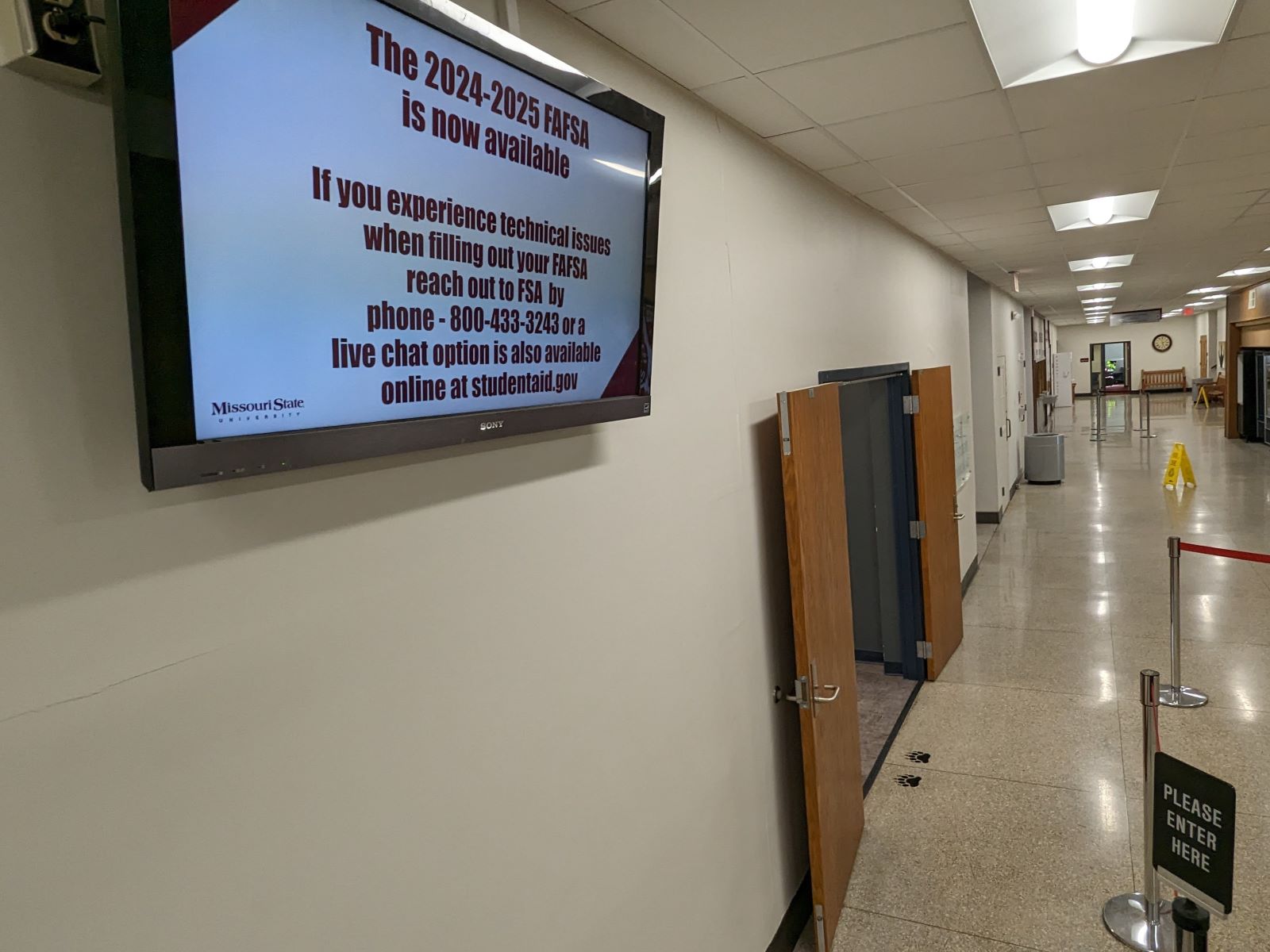Jack Ray’s daughter has big plans: She plans to study marine biology and start her higher education at Missouri State University.
Jan. 11, Ray was at the university’s financial aid office, getting some more information before starting the application process for federal student aid. While Ray has examined some of the basics to the Free Application for Federal Student Aid (FAFSA), he had not started the application process when he visited Carrington Hall.
In any other year, he’d be about three months late with getting started. But this year, the filing period for FAFSA didn’t even open until the first week of January.
A new, streamlined version of the application has been rolling out this year. Students seeking funds for the fall 2024 semester have been able to use the new online application with limited success.
Across the nation, students have reported errors and glitches that have kept them from completing the application, according to information from the Associated Press.
Rob Moore, director of financial aid at MSU, said the university hosted a webinar recently for newly admitted students for the fall ‘24 semester. As part of the webinar, the financial aid staff included a poll to ask how students have been able to use the new form.
“We’re seeing a pretty significant grab bag of experiences,” Moore said. “Some people got it submitted with no problems at all, and had a great experience. Others have not been able to access it, or parents attempting to sign it have been unable to do so.”
What is FAFSA?

The FAFSA is an application that uses a family’s financial information to determine whether a student could receive financial assistance for college. This year the U.S. Department of Education introduced a new process intended to reduce the amount of time needed, and to increase eligibility for low- and middle-income students.
Justin Draeger, president of the National Association of Student Financial Aid Administrators said the group expects families will complete the application in less time, and that more students will qualify for need-based aid, according to an interview with the Associated Press.
One of the big changes is a shift away from the Expected Family Contribution to a new formula called the Student Aid Index. And the new application features an option to have information contributed directly from the Internal Revenue Service.
But the rollout has not gone smoothly. Users have reported the site has either shut down from malfunctions or does not ever submit forms, according to the AP. As of Jan. 4, the department had received more than half a million successful submissions. More than 17 million students usually fill out the application.
“The biggest issue before was the IRS and Department of Education actually talking to each other,” Ozarks Technical Community College associate vice chancellor Daniel Gutirrez said. “Now, they are not having to go in and do the IRS data retrieval tool, which was buggy. It removes more frustrations and more red tape.”

Southwest Missouri colleges and universities are preparing for delays. The new application has been mentioned to the governing boards of MSU and Ozarks Technical Community College during recent meetings.
Moore said a usual deadline for guaranteeing qualifications has been extended. Usually, students who applied by Feb. 1 of each year would be qualified for that priority deadline. That deadline has been moved back to April 1 — a move that was validated when a similar state deadline was also shifted to that date.
“In a normal year, a student could start filling out the FAFSA on Oct. 1, and they have a pretty significant landing strip by Feb. 1 to get the form filled out,” Moore said. “With the form realistically not being available until Jan. 1, that meant they had a month, with technical problems included, to get the form submitted, and we felt that was unrealistic.”
At OTC, Gutirrez said that the change should make a good difference for applying families, once the bugs are worked out.
OTC has not adjusted anything yet, but such deadlines and delays are on the table, whether it deals with application deadlines or payment dates.
“Right now we haven’t changed anything procedurally, or our deadlines,” said Joan Barrett, vice chancellor for student affairs. “But that remains to be seen. We are in constant communication with our student account services and with the Department of Education to let us know whether we do need to change some things.”
Moving at the speed of government
Another issue with the new application process — schools don’t yet have access to process applications and create their own records. That means they are waiting for the department to process them.
Moore said usually the Department of Education provides a few details so that the staff at Missouri State can start communicating with students about next steps.
“Students are filling out the form now, but the forms are not being processed, so they are kind of sitting in a holding pattern,” Moore said. “That means we are in a communication black hole with our students.”
Officials with both schools anticipate the process getting easier, as bugs are worked out. And regardless of the bugs, officials with both schools encourage families to keep trying. Barrett said a FAFSA application is the first step in many different programs that could help finance a higher education.
Moore recommended a state resource for people running into questions: He said he has found the state’s MOFAFSA.org site to be much more helpful.
“If folks are a little uncertain, that’s a good starting point,” Moore said. “I think the federal site goes straight into the weeds on a lot of things, where the state’s site is more student- and parent-friendly.”

